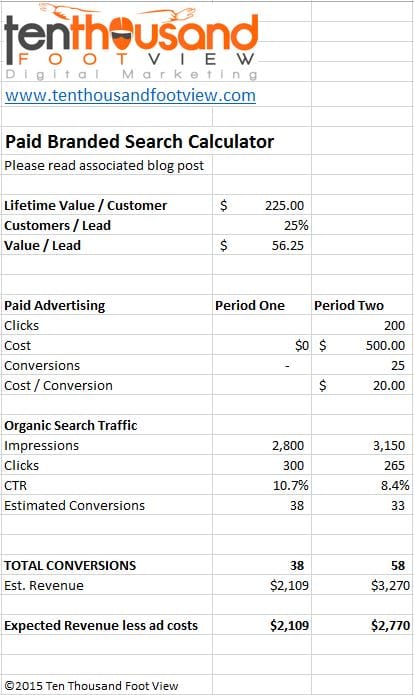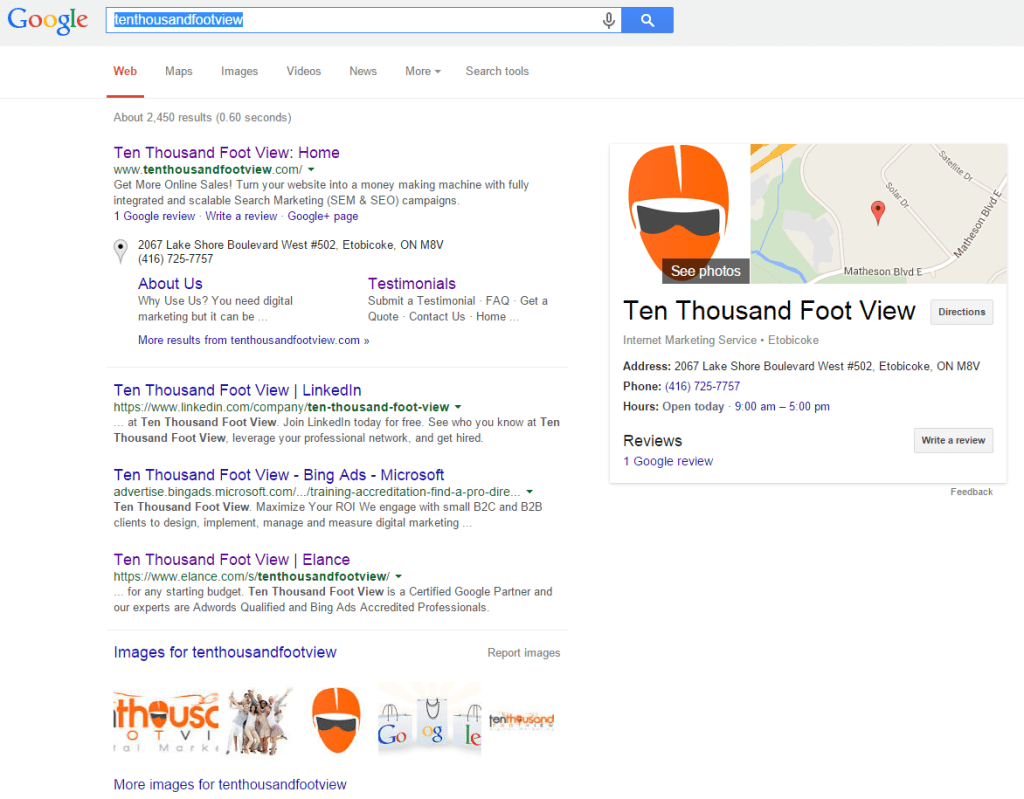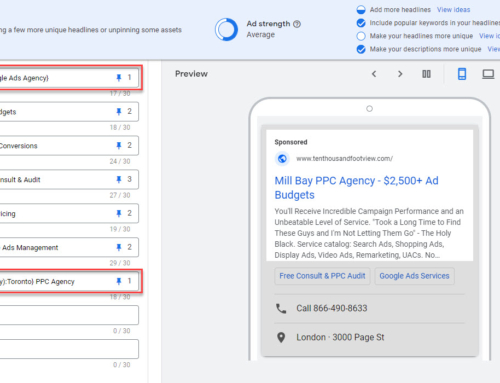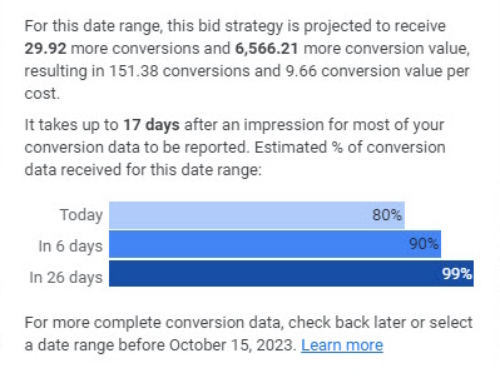Whether or not you should advertise your own brand with AdWords is one of the most hotly contested topics in search marketing.
First let’s be clear that the brands we are talking about are those brands that are unique to your company. They might include product names, product lines, company name and domain. They don’t include brands from others that you offer nor does it include common industrial names.
Many SEO folks suggest that it is relatively easy to rank #1 in SERPs for your own brand(s) so it is a waste of money to pay for clicks you’d otherwise get for free. On the other side, paid search specialists argue that more clicks offer more opportunities for conversions and that having an ad in addition to top organic spot will always lead to more clicks. Also, because your brand appears frequency on your website and likely in your url (if it doesn’t it should) you will generally pay a very low CPC for related keywords.
“SEOs” say yes to that argument, but you could invest that money into clicks from people who don’t already know your brand and thus spend your money more wisely. So who’s right? Our answer is it depends on your situation but more importantly, you should test it to find out for sure.
Different Scenarios
Scenario #1 – Your Brand is Not on the Top of SERPs
If your brand is not already in top position you are losing clicks. People that already know your brand may not be finding their way to your site and you are probably losing business. You should be advertising your brand in AdWords. You should also figure out why you are not ranking in the top organic spot and fix it.
Scenario #2 – Your Brand is in Top Spot of SERPs
Congratulations, you are probably already getting the lion’s share of organic clicks when people search for your brand. Perform a quick Google search of your brand name and see if any ads are showing up. Note that if you market in a large geographical area and have regional competitors you may also want to use the AdWords ad preview tool to run the search in different regions. Now one of two situations exists:
A. Nobody is advertising for your brand
In this situation you essentially own search results for your own brand. It is unlikely that paid ads are going to drive much more business to your website and even if it does you might find that the ROI isn’t high enough to justify spending a portion of your total ad budget on it.
B. Direct or indirect competitors are advertising your brand
In this situation it is highly likely you are losing clicks to your competitors. If you think about the psychology here, you have a potential client (or even existing client) that is looking for your website but may click over to your competitor where they will find what they believe to be a better offer. This is really bad news! Having your own paid ad at the top position of Google is going divert clicks from your competitors back over to your site.
Even if your situation is such that you are not having your brand contested there are some benefits to ads that organic alone can not achieve.
Side Benefits of Paid Brand Ads
1. You can target your ads to a landing page of your choosing – a landing page that is likely to convert more traffic than say your home page (organic result)
2. Your ads can contain your current marketing message / offer along with your street address, phone number, sitelinks, callouts, social metrics and more.
3. You can test different messaging in ads – messaging that can integrated back into your organic description tags for higher CTR
4. You will add some brand reinforcement as searchers see you more often in results
Testing Ad Performance and the Effect on Organic
No matter what scenario matches your situation it’s probably worth experimenting with paid ads for your own brand to see what the overall effect is on profitability. Here are the steps:
1. Conversion Tracking
Set up conversion tracking for both organic and paid search (in most cases a conversion is a lead or sale but can be something else if you wish)
2. Ad Campaign
In a separate campaign or ad group create and run ads targeting all the variations of your brand(s) you can think of. Hint, check search queries in Google Webmaster Tools for more keyword ideas.
3. Measure Results
To simplify things I’ve provide a spreadsheet that will do the heavy lifting. Just input each figure where indicated with green outline.
Assumptions
For this measurement to work we are going to make a few assumptions. First, we will assume that your organic brand result stays in top organic position for the entire experiment. Second, we will assume that the conversion rate for your branded term in organic is the same as for paid search. Third, we will assume there are no major reasons why one period would differ dramatically in conversions from the next (seasonal changes, big TV campaign, etc.).
What is a lead worth?
As a first step you need to calculate your lifetime value per customer. If you’ve never done this before you really should so you understand what a client is really worth to your business. There are numerous ways to do this, for more you can read the lifetime value per customer article from Wikipedia.
Next you need to know what % of your leads become customers. While different channels will generate different lead quality we will assume a uniform lead to client conversion rate to keep things simple. Count up your leads in a period and calculate the % that turned into customers. Remember, if your business generally has long lead times you may have to choose a time far in the past to have a more realistic view of conversion rate.
Multiply these 2 numbers together to arrive at your lead value.
What is your branded ad campaign generating?
Go into AdWords, choose the period you wish to measure for and record the total number of clicks, conversions, and total cost for your branded paid campaign/ad group.
What are you branded terms generating organically?
Go into Google Webmaster Tools (or under Acquisition / Search Engine Optimization from Analytics) and pull up the queries report. Export this to Excel and remove all but the branded terms; total up the impressions & clicks for the current period (when you were advertising your brand) and the previous period.
Results
Input all the figures into the spreadsheet where indicated. The bottom line of the sheet will indicate expected revenue less (branded) ad costs from the two periods. The larger of the two figures will dictate whether or not it pays to advertise your brand.

In this example we see that when we advertised with branded search ads that we generated expected revenue of $2,770 vs. $2,109 (net of ad costs). Therefore it makes sense, for lead generation purposes, to continue running a paid search campaign for branded terms.
Download our free calculator to crunch your own numbers and see if paid branded search makes financial sense for your business.
Are you considering hiring an agency to manage your PPC campaigns? Check out what we offer right here.






